The Florence Biennale Internazionale dell’Antiquariato, now in its 33rd edition in 2024 (here’s our preview report), open to the public from September 28 to October 6, 2024, establishes itself as one of the most prestigious and eagerly awaited events in the global panorama dedicated to antiques and art. Located in the heart of Florence, in Palazzo Corsini, the fair is not only a meeting point for collectors and enthusiasts, but also represents an extraordinary stage where historical eras intertwine, creating a fascinating dialogue between past and present. This year, eighty internationally renowned antiques galleries are exhibiting a curated selection of artworks, including paintings, sculptures and furniture, all chosen for their historical relevance and artistic value.
In this context, the works featured at the Biennale are not merely objects to be admired, but genuine windows into different eras and cultures. Each work tells a story, reflects the tensions and hopes of an era, and offers insights into the evolution of art over the centuries. In this article, let’s take a closer look at the 15 key works of the Biennale (for which we have been allowed to publish the price), the must-see pieces in the stands: chances are that some of them will end up in a museum. It is also thanks to works of this quality that the Biennale is confirmed as an unmissable opportunity to immerse oneself in art and culture.

This Madonna and Child by Bronzino returns to the Florence Biennale Internazionale dell’Antiquariato more than sixty years later: in fact, it was exhibited there for the first time as soon as it was discovered, in 1961, with attribution, however, to Pontormo (even Roberto Longhi thought it was the work of the Empolese artist, already after attributional hypotheses oriented toward Bronzino had come out). For some time, however, critics have been settling on the name of Jacopo Carucci’s pupil: it would be, in particular, an early work, datable to 1525-1526, a time when Bronzino was in his early twenties and working in close contact with the master, so much so that his works from this period have often been confused with works by Pontormo. Specifically, it would be a work made when both were working on the decoration of the Capponi Chapel in Santa Felicita in Florence. It was exhibited in 2022 at the major exhibition on Donatello at Palazzo Strozzi: Bronzino’s Madonna and Child , in particular, was in the last room of the section set up at the Bargello Museum, since the composition (also known from a drawing kept at the Gabinetto dei Disegni e delle Stampe in the Uffizi) resembles Donatello’s Madonna del Pugliese - Dudley. However, as scholar Gabriele Fattorini has written, "in contrast to the prototype, if the Madonna retains a distinct Donatello profile, the little Jesus instead swells in vigor and the cloths swell, keeping Michelangelo’s lesson in mind."
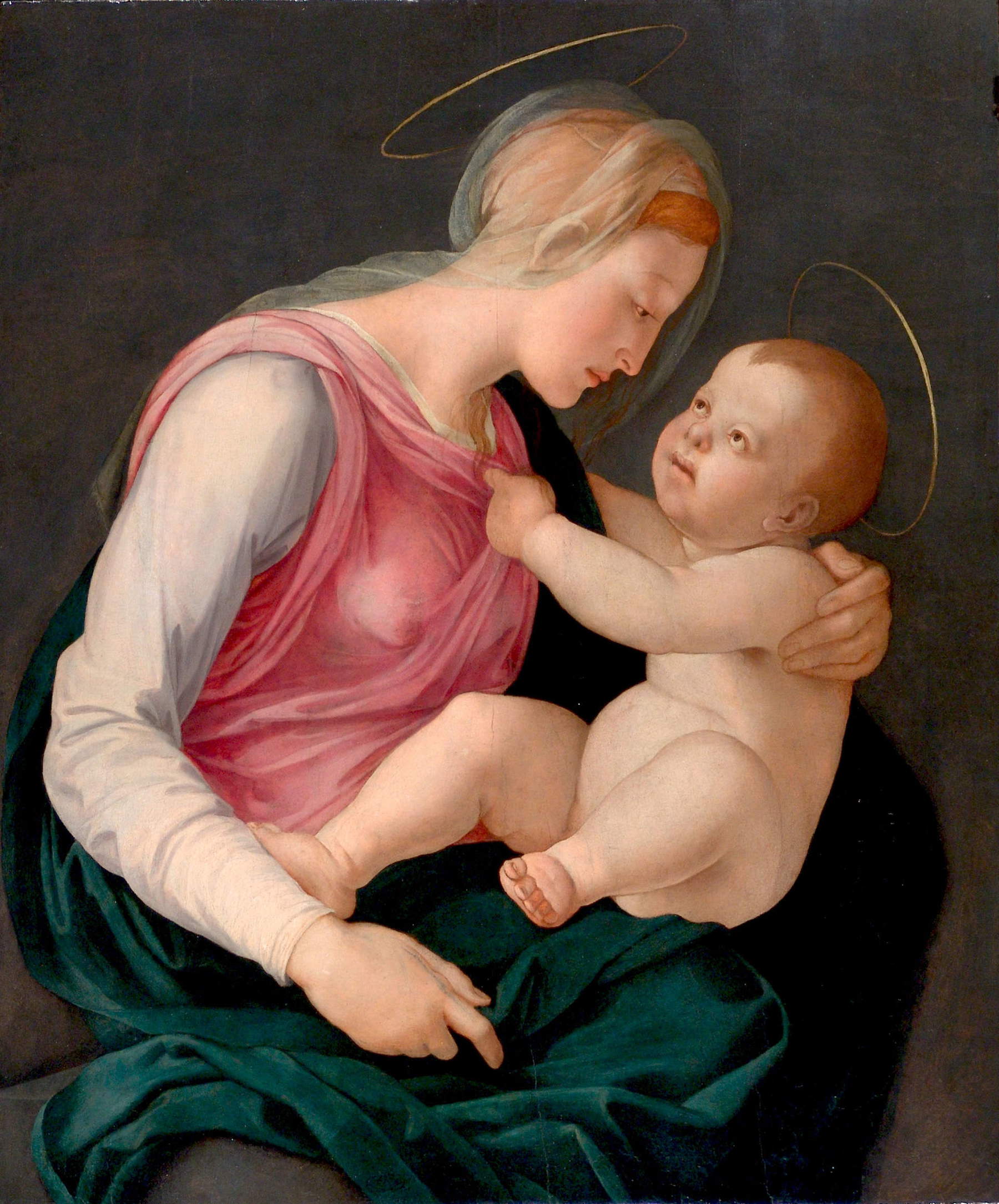
Acquired at auction in Paris more than 30 years ago as the work of an anonymous hand, this Study of Jupiter is now considered by many scholars to be Michelangelo’s earliest known drawing. The figure is based on a fragment of Roman marble, the lower half of a enthroned Jupiter (1st-2nd century AD). Because of the drawing’s distinctive stylistic elements, since its discovery there has been a broad academic consensus that the author was a young apprentice or assistant working in Ghirlandaio’s workshop in late 15th-century Florence. Michelangelo passed through this very workshop: there, he studied alongside other talented apprentices, honing his skills and beginning to develop his very recognizable style of sculptural drawing. On the basis of comparisons with other early drawings and the significant presence of the two distinctive ink tones, many leading scholars in the field, including Paul Joannides, Timothy Clifford, Zoltán Kárpáti, Miles Chappell, and David Ekserdjian, have argued that this drawing is the earliest known work on paper by the young Michelangelo. The drawing’s connection to Michelangelo’s early work was initially established by Miles Chappell, an expert on 15th- and 16th-century Florentine drawings. After extensive research, the drawing was first published as a work by the young Michelangelo in 2019. The attribution to Michelangelo is based on a number of factors, especially that the subject, materials, and style of the drawing are all in agreement with what we know of Michelangelo’s early development. The drawing has two tones of brown ink-this was a technique Michelangelo often used, but we never see it in Ghirlandaio’s own drawings.
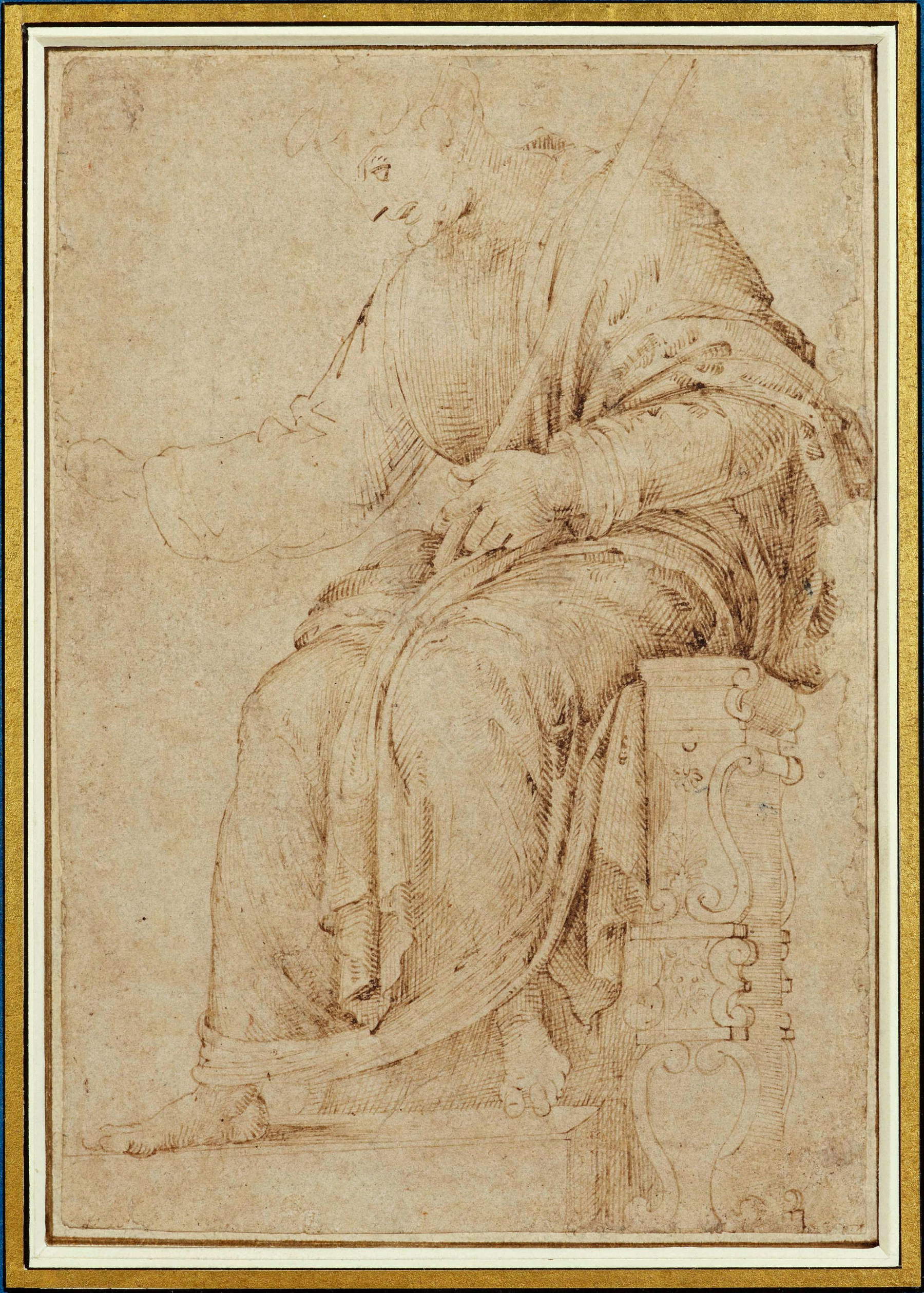
Violent and incisive in a way that had never been experienced in the art world before Bernini, these four gilded bronze heads have always been held up as an example of the expression of Baroque excesses. Dated between 1650 and 1655, they were cast from the same model and belong to the genre of the grotesque, understood exclusively as decoration. Finest and extravagant, each equipped with an irregular hole in the nape suitable for housing the plumages in vogue at the time, they were originally made as side elements for Gian Lorenzo Bernini’s personal carriage. It would be the same, at an unspecified time, who would remove them from the carriage to include them in his personal collection and place them, as the first inventory records, in the hall of the noble apartment of his palace on Via della Mercede. The ultimate and precise meaning of these four gilded bronzes, a very personal “joke,” is not easy to decipher. They could have been merely an ostentation of his whimsical genius, which over the years had changed the face of the Eternal City, or simply fit into the tradition of marginalia, the deformed, frightening or bizarre marginal figures of the upside-down world that provide a derisive but decorative commentary on the seriousness of earthly existence. Either way they would have served the same sarcastic function on the sculptor’s chariot, an ironic commentary against the seriousness of everyday life or a despairing, mocking shout addressed to passers-by who dared to look up at the sculptor’s chariot.

This is the only work from Giacomo Ceruti’s Padernello cycle still on the market. The Padernello cycle (so called, but in reality it may not have been a coherently conceived cycle) is a set of works that was discovered in 1931, at Padernello Castle (hence the name) by art historian Giuseppe De Logu: it consists of thirteen paintings (to which, however, at least three others of identical workmanship should be approached) that Giacomo Ceruti, one of the greatest artists of the eighteenth century, dedicated to subjects drawn from the popular life of the time. In these works the artist touches one of the peaks of his career and produces a series of paintings that allow the viewer to take a journey into the slums of 18th-century Brescia. The painting presented by Matteo Salamon depicts two porters, that is, two boys from the working classes who, as a job, carried goods (typically foodstuffs) inside large wicker baskets that, when necessary, as can be seen in the canvas exhibited at BIAF, were also used for moments of leisure: in this case, the two boys are playing cards. The work was unfortunately not lent to the major Ceruti exhibition held in Brescia in 2023, but it is part of the thirteen that the Salvadego counts kept at Padernello Castle. Historical events have made it possible to trace the history of the cycle’s paintings back to 1772, when they were part of the Avogadro collection: the same is true of this canvas, which the public was last able to see displayed in 1953, in an exhibition held in Milan’s Palazzo Reale(I pittori della realtà in Lombardia).
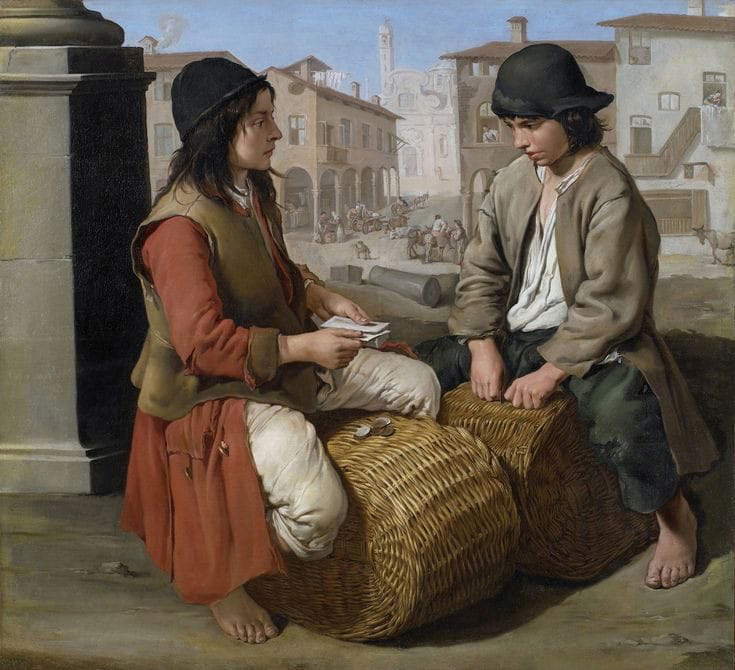
Bernardo Bellotto executed this typical depiction of one of the most famous monuments of ancient Rome in the early 1740s, after his visit to the city in 1742. Like many of the artist’s early works, this painting was previously (and erroneously) attributed to his mentor and uncle, Canaletto. Thanks to studies by Anna Bozena Kowalczyk and Charles Beddington, this work was later correctly attributed to Bellotto. Recognized as one of his earliest masterpieces, the work illustrates his emerging distinctive artistic personality, demonstrating the nature of the artistic exchange between him and his uncle and exemplifying his precocious talent as well as extraordinary quality of execution. An important factor explaining the painting’s earlier attribution concerns the many similarities it shares with one of Canaletto’s drawings (British Museum, London), which also depicts the Colosseum from a Western point of view. Although Bellotto adheres to Canaletto’s composition and general point of view, there are also marked differences between the two drawings, as in the row of buildings that line the Colosseum and much of the vegetation and figures. In addition, Bellotto renders the view with greater perspective breadth, including to the right the Arch of Constantine and distant hills that lend more atmosphere to the horizon line. By adding these changes, Bellotto produced a composition that is more striking and intense than his uncle’s. Bellotto is believed to have traveled to Rome in the spring of 1742, shortly after his marriage to Elisabetta Pizzorno on November 5 of the previous year. He stopped in Florence, Lucca and Livorno along the way and is documented returning to Venice on July 25, 1742. This painting must be later than his trip to Rome, and Kowalczyk has suggested a date of execution shortly after Bellotto’s return from Rome to Venice, around 1743-442.
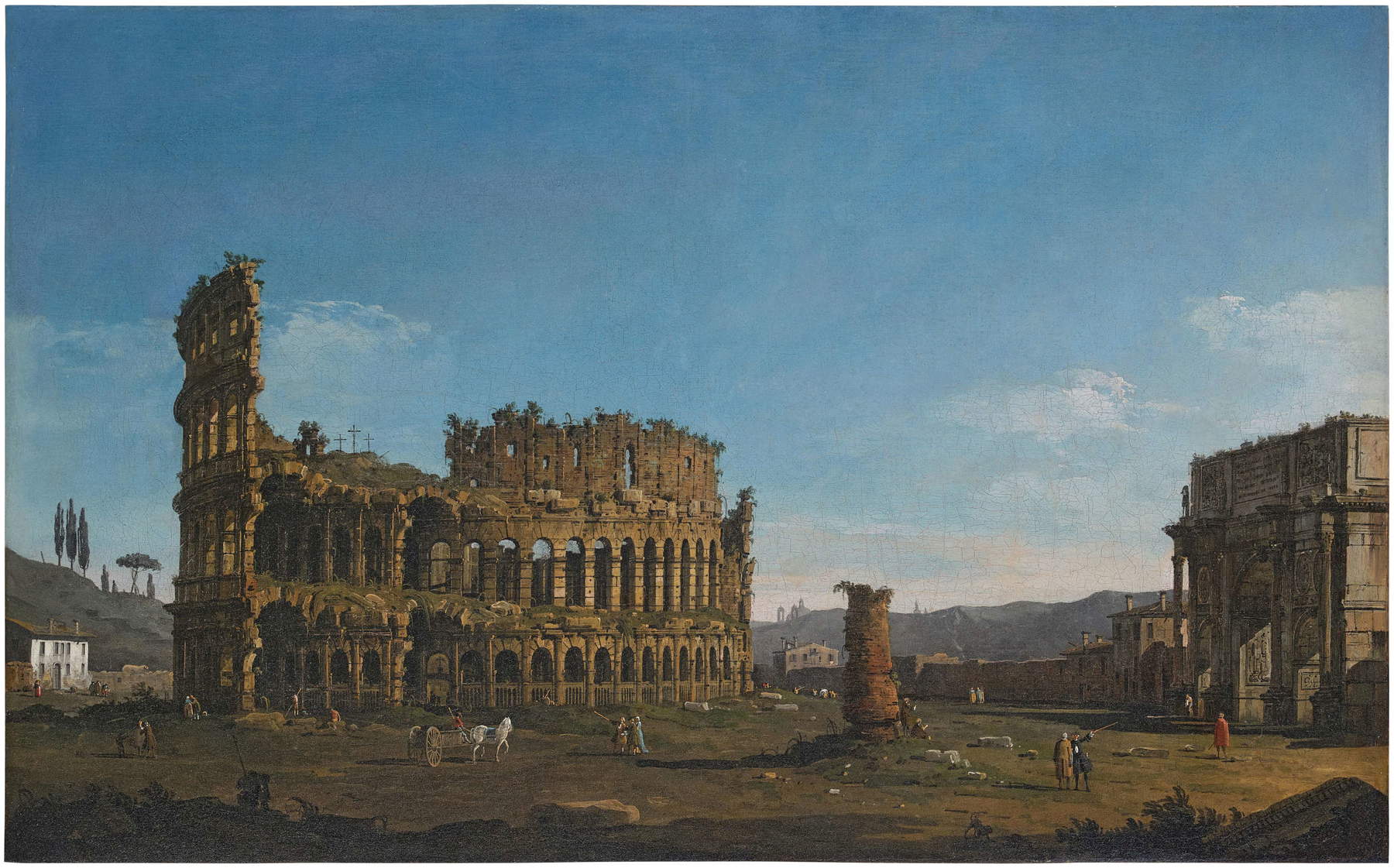
This painting was given to Guido Reni recently by Massimo Pulini and Francesco Gatta, both of whom came to this conclusion independently. It depicts fourteen cupids playing, some even in a crude manner as can easily be observed, in a natural landscape, inside a hillside forest. The Bolognese artist approaches the scene as if it were a set of episodes all separate from one another, in a clear, limpid style that almost anticipates the Arcadian painting of the next century. Initially given to the school of Francesco Albani, the painting was later recognized as the work of Guido Reni because of certain elements (the detail of the plants, the clear and cold colors, the chromatic and compositional balance, and the glazed light) that seem to be typical of his hand instead. Thanks to some documentary discoveries, it has been possible to trace the history of the work, which belonged to the Roman collection of Odoardo Farnese, whose inventory dated 1644 mentions “Un quadro in tela con cornice grossa dorata, dentro dipinto un Paese con gioco di Amorini, mano di Guido Reni, et dentro d’esso quadro è racchiuso un ritratto d’una dama.” The painting with cupids was in fact used to conceal, in Odoardo Farnese’s secret dressing rooms, a Portrait of a Lady.
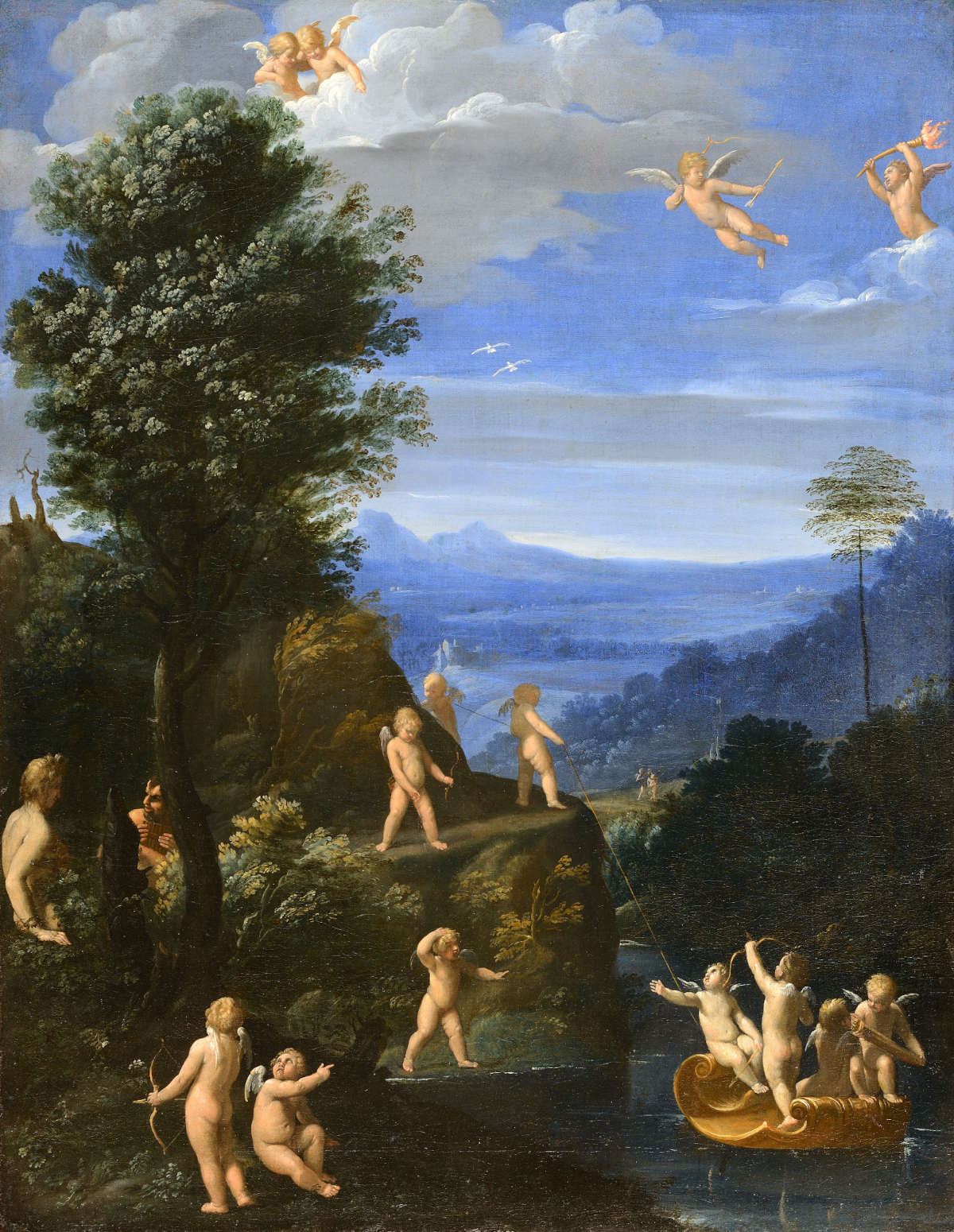
In the field of still life, Fede Galizia played a fundamental role in directing the orientations of all the artists in the Milan area: at a very early date, in 1602, he signed his first still life, in which he set the traits that would mark all his production: compositions governed by harmonious symmetries, a very careful, almost miniaturist-like rendering of the different surfaces of flowers and fruits, and a cold, sharp light that beats rigorously on the plane. The artist often offers very similar compositions but making variations each time, this is also the case with the present painting; an openwork ceramic fruit bowl filled with fruit with pears variously arranged on the plane is the protagonist of three compositions. The critical events of the three paintings were reconstructed by Giovanni Agosti and Jacopo Stoppa in the exhibition catalog of the Trento exhibition dedicated to Fede Galizia. It should be mentioned that Mauro Natale and Alessandro Morandotti, the first scholars to publish this painting in the large Electa repertory devoted to Italian still life, had also pointed out a possible pendant in the still life of Peaches, jasmine, crystal cup and cotogn apples at Silvano Lodi, which they however attributed to Panfilo Nuvolone on the basis of identification with a painting cited as a work by the Cremonese painter in the inventory of the collection of Charles Emmanuel I of Savoy, reflecting the commonality of models and ideas between the two promoters of the still life genre in Lombardy. The emergence in later years of other versions of the same composition has made this hypothesis drop and also refer the second painting to the hand of Fede Galizia. Extremely problematic remains the question of dating Fede’s still lifes, partly because of the painter’s reuse of the same modules in different compositions. Remaining with the painting that is the subject of this card Mauro Natale and Alessandro Morandotti had proposed a date around 1610, Flavio Caroli, while not openly expressing a hypothesis, places the painting among the last works in his catalog raisonné, Giacomo Berra finally in the catalogs of the two exhibitions dedicated to Arcimboldo prefers a date around the turn of the century.
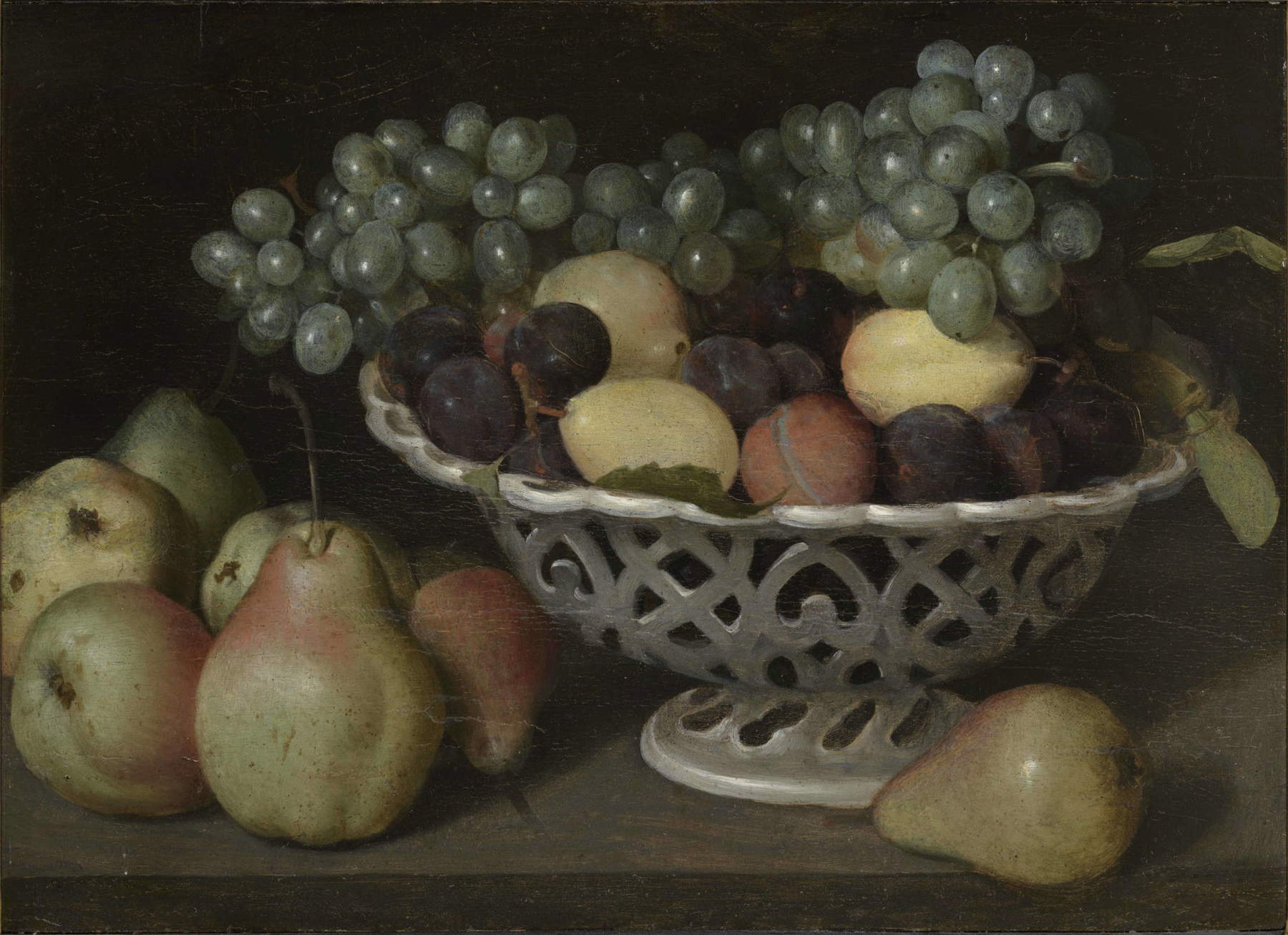
The panel presented by Romigioli Antichità comes from the Moratilla collection in Paris but its early history is unknown. Apart from a few abrasions on the Madonna’s face and neck, the conservation condition is excellent: the panel, executed by Lorenzo di Bicci, presents a refined “sgraffito” work with which the decoration of the cloth covering the throne on which the Virgin sits, supported on either side by the two angels, was obtained. The Madonna’s robe is decorated with a crown motif repeated several times, while the mantle has raceme ornaments instead. According to the scholar Angelo Tartuferi, who has dealt with this painting, “the size, richness and care of execution in every detail, as well as the high intrinsic quality of the painting, attest that we are dealing with one of the most important and prestigious commissions by far among Lorenzo di Bicci’s works that have come down to us.” Originally the panel was likely part of a large polyptych, probably similar to the one now preserved in the Museo della Collegiata in Empoli, belonging to the same stylistic moment. Also according to Tartuferi, there may be another surviving element of the same complex, a cuspidate panel depicting St. Nicholas of Tolentino that was in the Matteotti collection in Milan in the late 1960s.
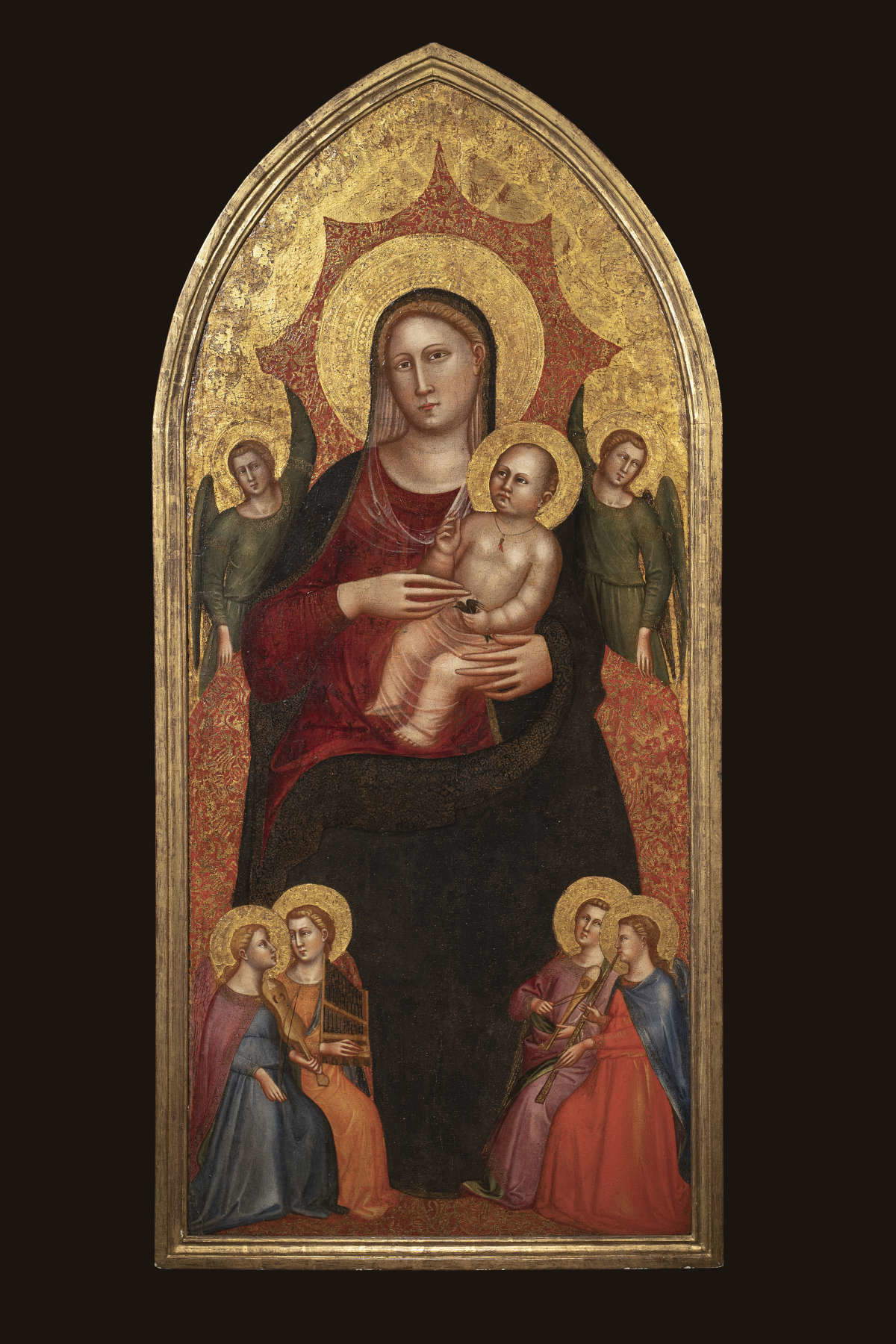
The Madonna in Glory with Cherubim presented to BIAF by Fondoantico is the largest fragment of the impressive altarpiece representing the Virgin Appearing to St. William that was commissioned by Mother Maria Agostina Tomaselli for the church of Jesus and Mary at Porta Galliera in Bologna and completed by Francesco Albani by 1646. The painting reappears on the occasion of the 2024 edition of the BIAF after an oblivion of more than two centuries, following the Napoleonic spoliations that also affected the Bolognese building, which was subsequently destroyed, and the consequent fragmentation of the entire decorative apparatus during the 19th century. Following the Napoleonic suppressions of the Church of Jesus and Mary, the collecting vicissitudes of the canvas are highly complex and do not fully explain why, of the three paintings that adorned it, only this one had such an inauspicious fate. The painting, in fact, was first transferred to the storerooms of the now suppressed convent of San Vitale, where it is described in a 1799 inventory. Later, it was transported to the then Royal Picture Gallery of the Academy of Fine Arts in Bologna, where it appears in the inventories of 1801 and 1820. In 1821 it was sold to Count Cesare Bianchetti, one of the most representative figures of aristocratic Bologna in those years, who occupied a prominent position as Legate Pro-President of the Academy. In 1821 the nobleman decided to have the painting cut into four parts by restorer Antonio Magazzari, separating the four most important groups: thus the upper part was divided into the two pieces of the Madonna in Glory with cherubs, while in the lower part it was decided to isolate the Saint William from the Magdalene, of which the fragment with the skull remains. The scattered fragments then had different histories. The Madonna in Glory with cherubs was spotted by Eric Van Schaack in a private collection in Bologna, where it was documented by a photograph taken at the beginning of the last century by Felice Croci, later recovered and also reproduced by Catherine Puglisi in her 1999 monograph. After surprisingly coming back to light on the Brescian market in 2023, it was purchased by Tiziana Sassoli’s Fondantico, which entrusted its cleaning to Andrea Cipriani of Florence. The altarpiece constituted a convincing example of Francesco Albani’s mature phase, whose peculiar characters are best recognized in Fondantico’s large fragment.
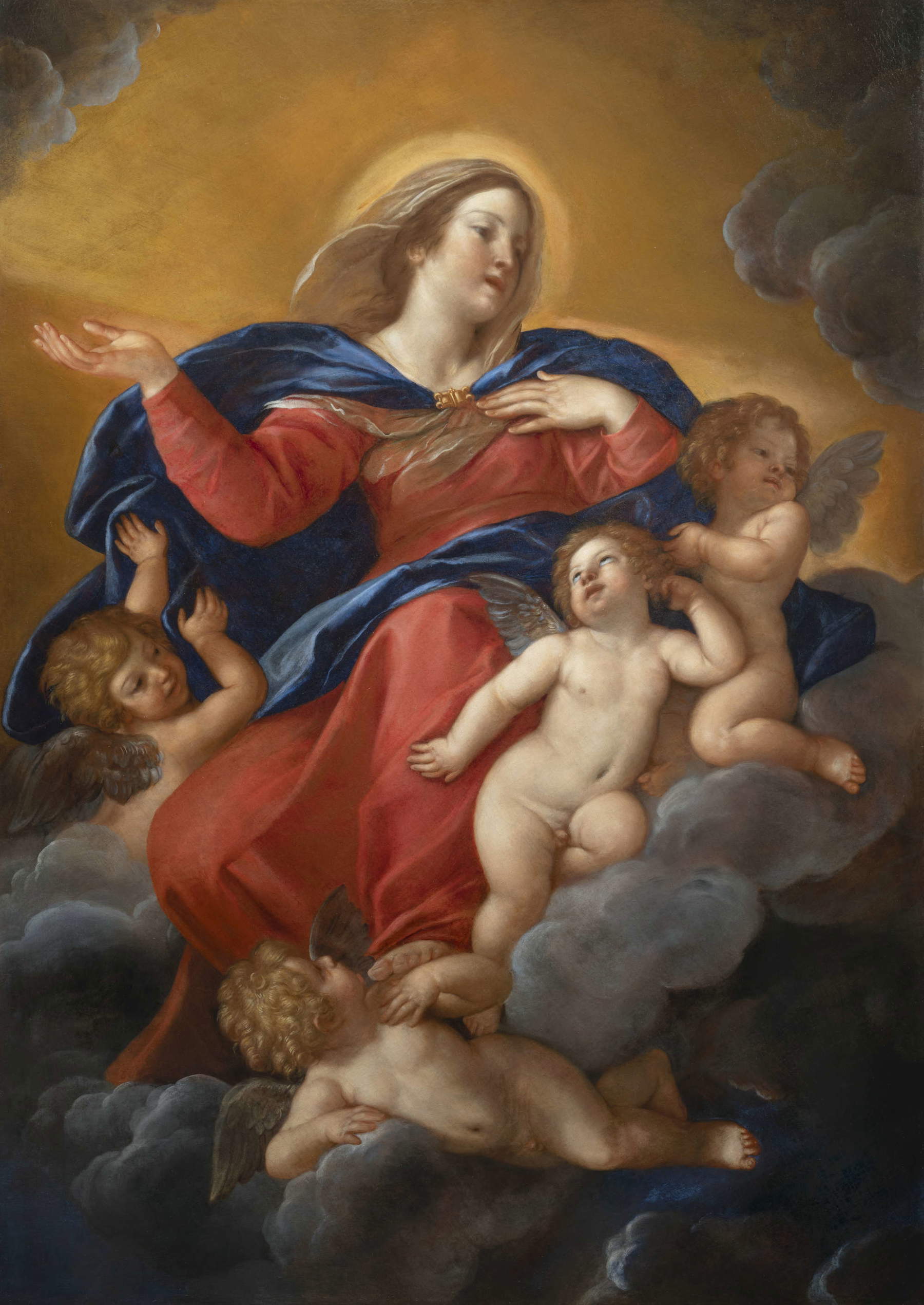
Gustaf Fjæstad, known as the “Master of Snow,” dedicated his life to capturing the beauty of the snowy landscapes of his native Sweden. His greatest success was realized internationally, particularly in Germany and Italy, where critics and collectors appreciated his delicate winter depictions. The strength of Fjæstad’s works lies in his ability to convey a sense of mysticism and emotional power through icy landscapes, evoking an idea of uniqueness reminiscent of the many words Eskimos use to describe ice. The artist paints outdoors, seeking special light and capturing the unspoiled beauty of nature. His creativity was influenced by the Theosophical movement, which sought universal enlightenment, and his works reflect an intense search for harmony with nature. An emblematic example of this approach is the painting The Snow, which invites the viewer into a meditative state, creating a fairy-tale atmosphere. The canvas is initially presented as a decorative play of snowflakes, recalling Art Nouveau with its graceful curves, but it conceals a deeper meaning, a desire for inner peace and an invocation to life in harmony with the natural environment. Fjæstad’s technique is particularly innovative: he uses photosensitive chemicals and a pointillistic impasto technique, creating extraordinary optical effects that make white luminous and vibrant. His skill in layering thick layers of color allows for exceptional control over the play of light, evoking a rich palette of reds, blues, and grays, clearly influenced by pointillists such as Georges Seurat. In addition, the soft, ornamental snow forms highlight the Art Nouveau imprint and mark a transition from the nineteenth-century style to a more modern and innovative artistic language. Gustaf Fjæstad was able to transform his passion for snowy landscapes into an art capable of evoking deep and universal emotions, positioning himself as a leading figure in the art scene of his time and anticipating contemporary forms of expression.
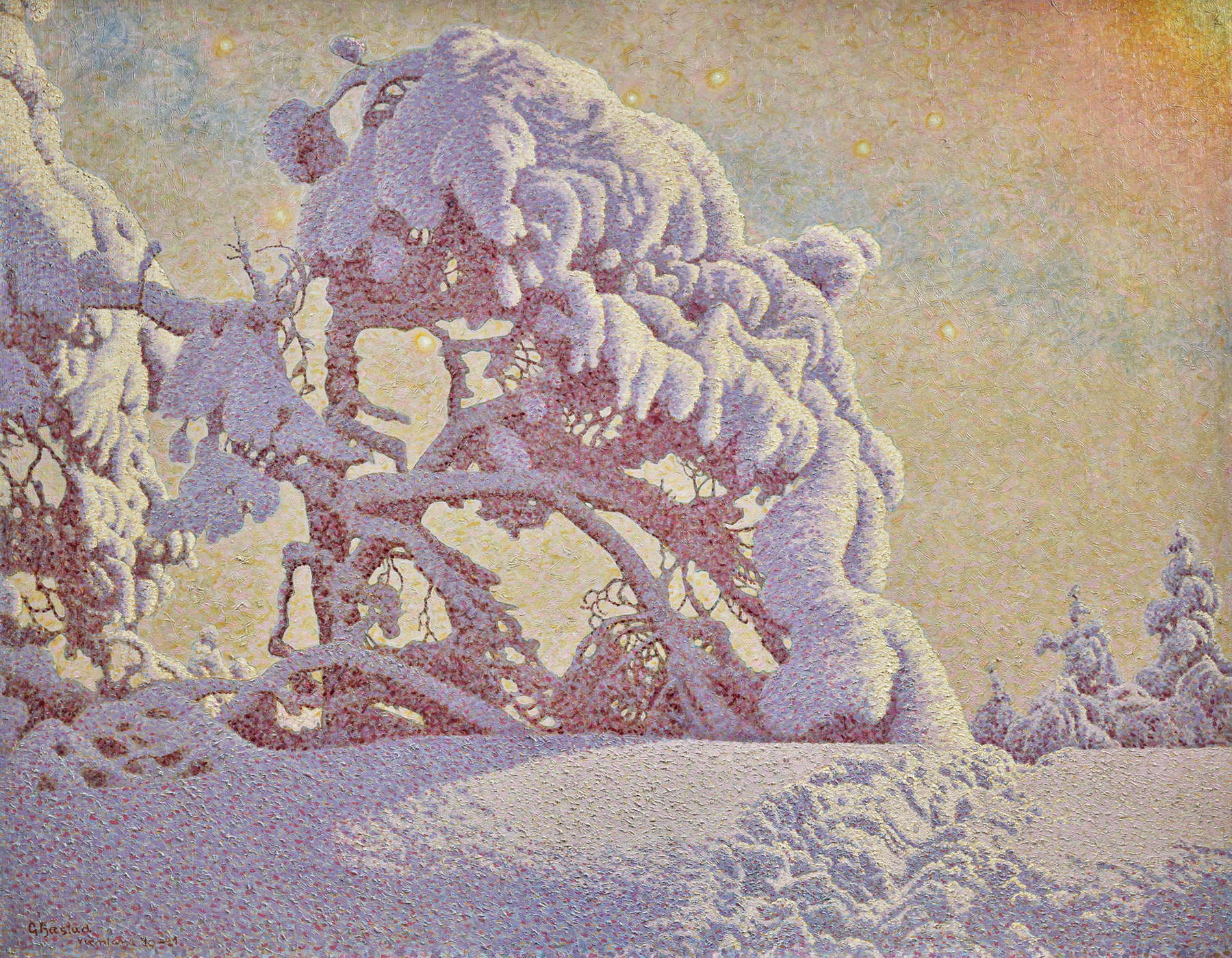
The scene depicted in this painting by David Vinckboons, a Dutch painter who worked at the beginning of the so-called Golden Age, vividly evokes a festive peasant banquet, a moment of collective joy that contrasts with the more somber and critical vision of Bruegel the Elder. Here, by contrast, we find ourselves immersed in an atmosphere of tolerance and irony, where peasants indulge in revelry and entertainment. The laid table offers a variety of succulent dishes, from lamb loin with rich sauces to mussels (a typical Flemish dish), the shells of which are carelessly tossed on the ground, creating a sense of abundance and carefreeness. The painting conveys a feeling of vitality and excess, accentuated by the bright colors and minute details that characterize the characters’ expressions. The faces of the peasants, with their tragicomic expressions, tell stories of joy and simple life, making the atmosphere almost caricatured but charming. The rhythm of the scene is punctuated by arms raised to the sky in festive abandon, and almost evokes a satirical carme reflecting the joys and toils of peasant life. In this setting, the grotesque vein makes itself felt but without overshadowing the overall pleasantness. It is an ode to life, a moment of celebration of community, where each character, with his or her own peculiarity, contributes to a lively and engaging picture: a “Grande Bouffe” where conviviality and cheerfulness prevail over all other sentiments, but where the artist’s position is nevertheless not absent.

A masterpiece by Niccolò Cannicci with a long history: it was exhibited in 1887, just after completion, at the 1887 Esposizione Nazionale Artistica di Venezia, then again in 1888 at the Esposizione Nazionale di Belle Arti in Bologna and again the same year at the Esposizione della Società di Promotrice in Florence, and was included in several publications. For this work, Cannicci also won a prize at the 1888 Florence Promotrice. A highly regarded painting at the time of its creation, it is among the staples of the artist’s career: it depicts a moment of simple life in the Tuscan countryside, the moment when, in a sober, almost Spartan religious ceremony, the fields in which the farmers would work were blessed. A magazine of the time said that in this painting Cannicci has “drawn and suffused with rustic grace and suavity the most beautiful figures of his devoted peasant women” with a “feeling that is evident and accessible to everyone.” Niccolò Cannicci belonged to the second generation of Macchiaioli painters, and this painting, from the collection of Countess Gargallo of Syracuse, is one of the best examples of his painting: an art taken from life, imbued with feeling, very bright and rich in color, with some stylistic solutions that anticipate pointillism (for example, see the small touches of color with which Cannicci gives the feeling of the sky at sunset in this painting) and that will be widely studied by the whole movement of the postmacchiaioli.

The painting, cited by Ferdinando Arisi as autograph, is another version, authentic and completely in the master’s own hand, of the painting of almost similar dimensions (98 x 134.5 cm), signed and dated 1751, now preserved, together with the pendant with the Preaching of an Apostle, in the collection of the Harrach counts at Rohrau Castle, Austria. The two paintings now in Rohrau were purchased directly from Panini’s studio by Austrian Count Ernst Guido von Harrach during his trip to Italy through the mediation of Abbot Crivelli. The painting presented at the BIAF, unpublished, is characterized, writes Francesco Leone, “by a contemptuous drafting of remarkable quality in the rendering of the architecture and, conversely, by great refinement in the many figures that populate the scene, as in Panini’s best works of the 1750s. Rather uniformly throughout the canvas - in good state of preservation - one notices at the shadows the brown color of the preparation because Panini, with the virtuosity of the great master, modulated with a skilful saving technique all the shadows of the painting using precisely the brown of the imprimitura of the canvas.” On these areas of shadow obtained by leaving the preparation of the canvas exposed were originally to be painted, to give the work a greater state of completeness, thin veils of dark color that today, as is often the case in these cases, have been largely lost. On the technical side, then, the painting is a most interesting testimony to the executive modes of the great master from Piacenza, one of the best-known painters in the cosmopolitan artistic scene of Rome at the time. According to Panini’s most typical poetics, this large painting combines the genre of architectural whimsy-according to a poetics of the picturesque that likes to bring together in an imaginary way vestiges of ancient Rome-with a series of characters, remarkable for quantity, quality, monumentality, and state of preservation, which attribute to the work, even in the reference to the classical world identified in the theme of the Sibyl, an anecdotal character typical of the Roman Arcadian culture of the mid-18th century. The painting was executed later than the canvas in the Harrach collection.
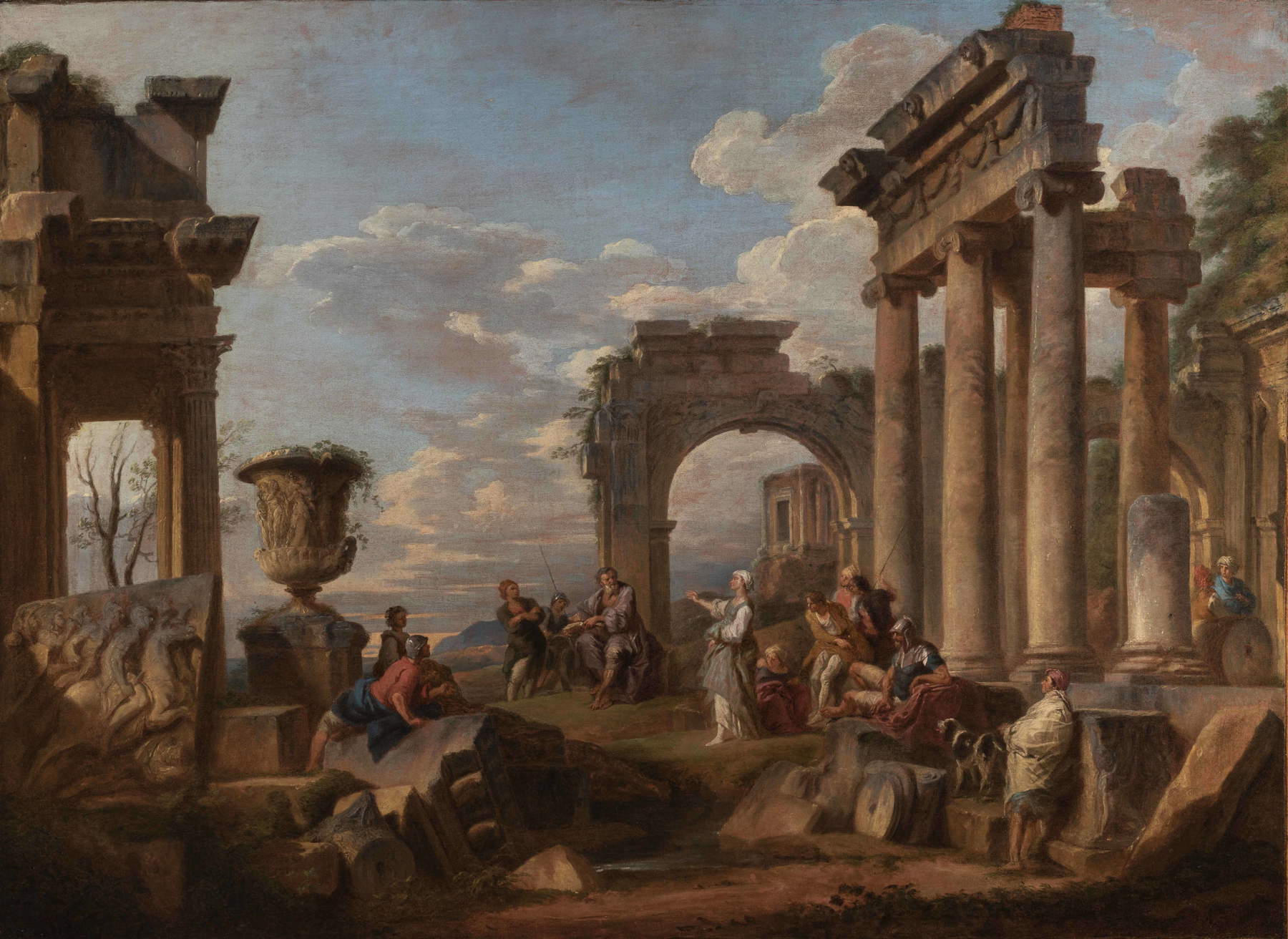
Giorgio Baratti Antiquario presents at BIAF two very rare mirror paintings, sold in pairs (below in photo the one with Diana with a nymph and Actaeon), in excellent condition. The subjects are classical: in the first one the figures of Hercules and Onphale stand out, while in the second, as mentioned, Diana with Actaeon and a nymph. These works, according to Sandro Bellesi, are datable to the 1780s, as they present stringent stylistic and typological characters with various works fired by Luca Giordano during his stay in Florence in that period, his golden age: these characters attest references to his various safe compositions on canvas and fresco. In particular, comparisons with some of the figures in the gallery of Palazzo Medici Riccardi and in various canvases executed for important Florentine collectors, such as the Rape of Deianira in the collections of Palazzo Pitti, the History Writes the Annals on Time now at the Musée des Beaux-Arts in Brest, and the Bacchus and Ariadne at the Chrysler Museum in Norfolk, appear significant. The figures painted by Luca Giordano on the two mirrors, turned with soft, dense brushstrokes, display an eclectic culture, borrowed mostly from the late lesson of Pietro da Cortona and his closest followers, as well as reflections on Bolognese classicist culture derived from the school of the Carraccis and Domenichino.

The portrait exhibited at BIAF by Callisto was previously identified as that of opera singer Giuditta Pasta, and was published by Sergio Rebora in the catalog of the exhibition Giuseppe Molteni e il ritratto nella Milano romantica held in Milan in 2000. Giuseppe Molteni began his career as a restorer of paintings, working for the Louvre, the British Museum, and very important collectors. His Milan studio became a meeting place for collectors and dealers, and Molteni also devoted himself to trading in works of ’art. His friendship with Charles Eastlake, director of the National Gallery in London, was very important in this regard. In parallel, Molteni’s activity as a painter of historical scenes and especially as a portrait painter took hold. In this genre of painting he became the most fashionable artist in Milan along with Hayez.
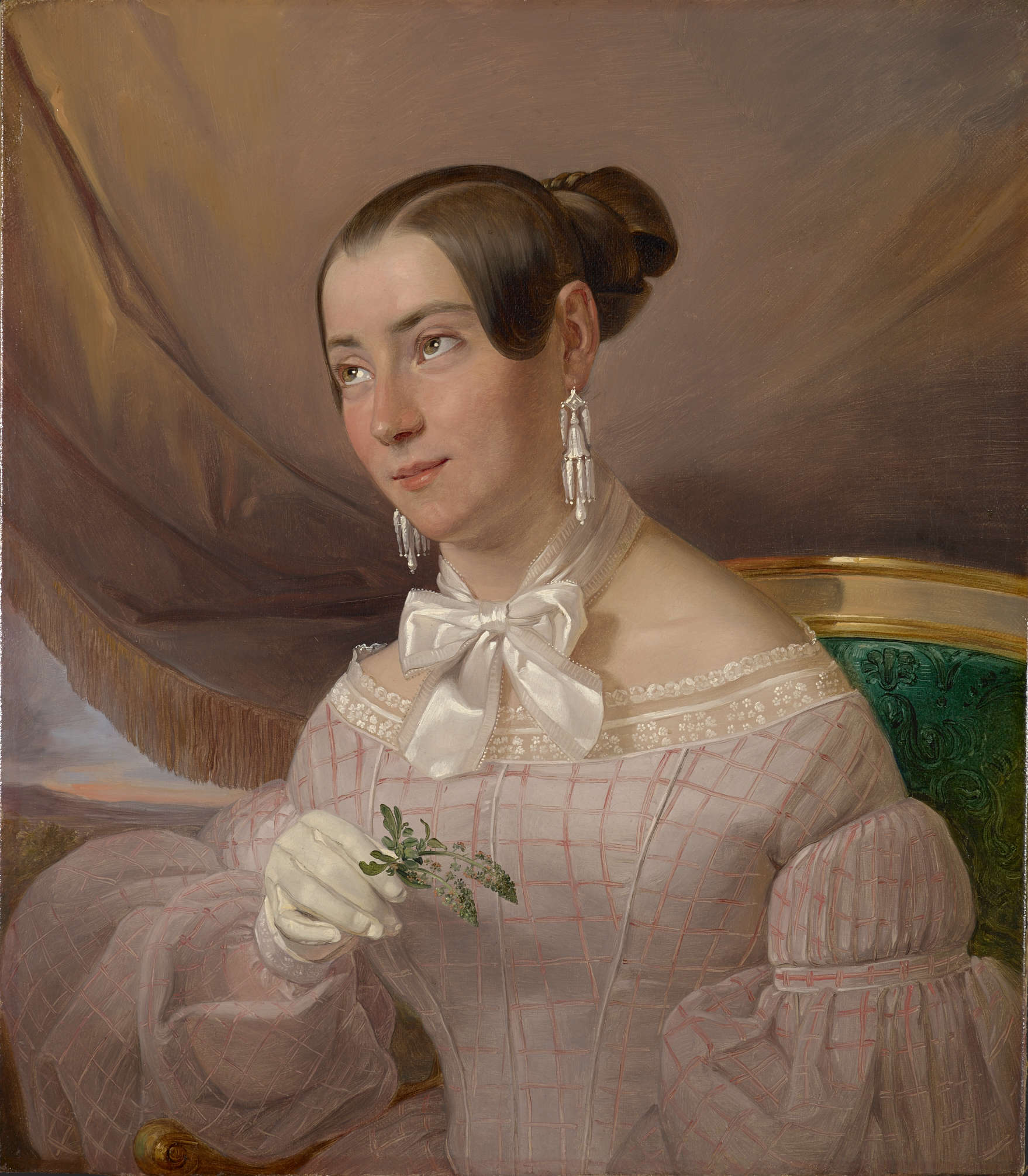
Warning: the translation into English of the original Italian article was created using automatic tools. We undertake to review all articles, but we do not guarantee the total absence of inaccuracies in the translation due to the program. You can find the original by clicking on the ITA button. If you find any mistake,please contact us.